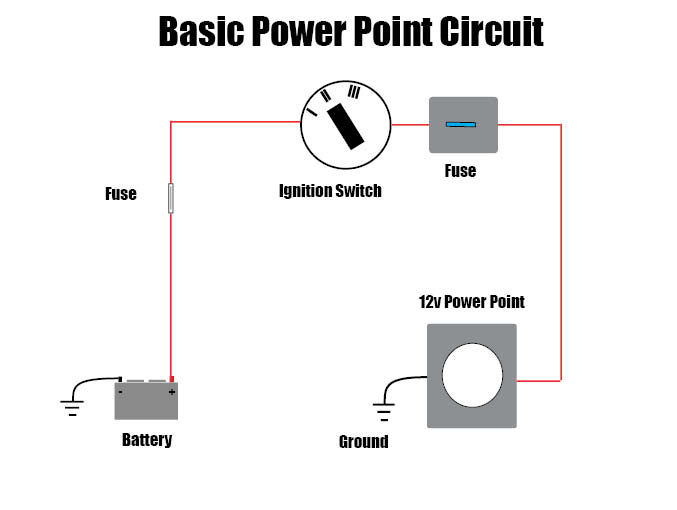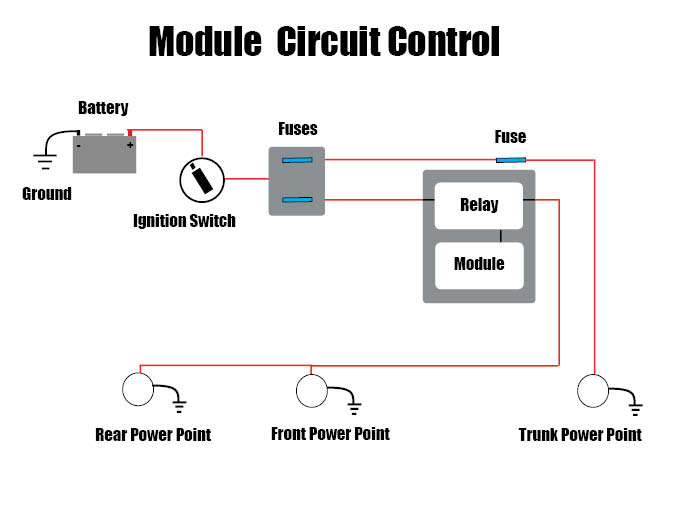How To Fix Car Lighter Fuse
Trying to light a cigarette or charge a phone and the power goes out – It's more than a little irritating, it's really annoying!
Five causes of a faulty car cigarette lighter when the fuse tests Ok, include:
- Faulty power consumer plug/lighter
- Debris in socket
- Dirty/faulty fuse
- Damaged socket
- Disconnected or broken wire
Some people call it a cigarette lighter outlet, an auxiliary power outlet, power outlet phone charger point, 12v outlet, many names but all describe the same thing.
Now I know you've checked the fuse and it's OK, that's great, but we'll need to check the power is actually flowing through the fuse.

These guys are simple and so figuring this out won't take long, we'll look at the most likely faults first.
1 Faulty Consumer Plug / Lighter

So let's start by checking the consumer, what's the consumer? It's whatever you're plugging into the power socket. Lots of times the problem isn't with the car at all, but with the lighter, charger plug, or cable.
If the consumer is a cigarette lighter, check the coil face, is it broken or covered in tobacco? Modern car lighters and sockets are universal, take your lighter to a friend's or neighbors car and test it in their socket.
If your consumer is a phone charger, check the contact points for damage. Test it in another car or try a different charger. It's soooo common for the problem to be in the phone plug connector or cable.
The phone charger type plug has 3 contact points, one in the center and two on each side. All must be clean and free from debris.
The contact points are spring-loaded so that they contact the inside of the lighter socket firmly, go ahead and check that the contacts are working.
2 Debris In The Socket

This might sound too simple, but sometimes crap just gets stuck in the socket, pushing in the plug or lighter just pushes it further in and prevents the contact points from connecting.
3 Dirty Or Faulty Fuse

Now that we've ruled out all the easy stuff, let's take a look at the fuse. It might look OK, but the contacts may be dirty and causing resistance.
Fretting is common at electrical contact points, it's a buildup of corrosion caused by the flow of energy. Remove, inspect and clean the fuse contacts with sandpaper. You can find the location of the fuse box and the correct fuse by searching your owner's manual.

We don't know for sure the fuse is getting power and passing through it so let's go ahead and check it with a test light.
Place the ground clip on any clean chassis ground, verify the test light works. Now locate the cigarette lighter fuse and test both sides of the fuse.
The ignition switch must be in the on position and you'll need a test light. You can check out the test light I use here on the Auto electrical tools page.
4 Damaged Socket

This is more common than you might think, corrosion, bent or broken contact points will prevent the flow of power.
Check inside the socket, corrosion often starts at the bottom where moisture collects. Remove the fuse and use a suitable metal object to clean the rust, finish the job with some sandpaper.
If the power contacts are out of shape, prize them towards the center a little. Replace fuse and test, if the problem persists, replace the socket.
5 Disconnected Or Broken Wire

A simple test light is the best tool for this job, a voltmeter works fine too. So how do you test the socket? Easy, place the point of the test light on the brass center ring at the bottom of the outlet. Place the ground on the metal outer rim.
Before testing, turn the ignition on, power outlets will only be powered when the ignition is switched on, this prevents your car battery from draining away.
This is a lot like the board game "Operation" – if you touch the outer ring with the test light, the fuse will blow, so keep that in mind.
Testing with a voltmeter is just the same, positive probe in the center and the ground to the outer rim, 12v here means it's all OK.

Everything's checked out so far and we still have no power. Let's now check for loose wiring, it happens a lot.
You'll likely need to remove some dashboard trim to access the wiring. I've left checking the wiring to last because who wants to remove parts of the dash only to find all is OK.
When you access the wiring, obviously check it's secure, if all checked out go ahead and remove it.
Check carefully that the metal contacts are clean and tight. When wiring connectors begin to get loose they'll widen the mental contacts, causing a poor connection, even though the connector is attached.
If you find the contacts have simply widened, just squeeze them gently with pliers.
Check the wiring and connector for signs of scorch marks, any damaged wiring will need to be replaced.
So far we have checked and found:
- Consumer cable / lighter OK
- Fuse OK
- Socket condition OK
- No power in the socket
- Wiring secure at the socket
Power Point Circuit
A cigarette lighter unit as you can imagine is a very simple circuit. Every circuit has two sides, the power side, and the ground side.

Older vehicles will have a very basic PowerPoint circuit, controlled from the ignition switch. This means when the ignition switch is off there's no power at the PowerPoint.
Probe the wiring with a test light or voltmeter to check for signs of life. If you find power now, you either have a bad connector or the socket is faulty.
Modern Vehicles
Modern vehicles will have a slightly more complex layout. Control will begin with the ignition switch but passes to a central control module (computer), its function is to manage and prioritize various commands.
It will typically activate a relay sending power to the passenger power points but has the ability to turn off the relay (cutting power) if a fault is detected or the car battery is getting too low.

Trunk power points are usually wired separately and direct, this allows for use when the ignition switch is powered off.
Some vehicles are famous for control module failures, a fault code reader is required to interrogate the computer.
Testing The Circuit
These two simple tests will tell us which circuit is at fault:
- Power side circuit test
- Ground side circuit test
You can use a test light or a voltmeter. A partially broken wire or dirty connector will show 12.65 volts when tested with the voltmeter, but drop out when loaded.
A test light is especially useful to load the circuit, a dim light will indicate a poor connection.
No light or volts indicates a broken wire between the fuse and the lighter socket or a broken ground wire from the chassis to the socket.
Power Side Test
In this test, we're only concerned with the power side of the circuit. Test the circuit at points 1, 2, 3, and 4. The ignition must be turned on, but remember, leaving your ignition on for long test periods will flatten the battery, use a battery maintainer if needed.

You can use a voltmeter or test light.
I have shown the ground wire from the socket going to the chassis ground. But in actual fact, it will be another wire paired with the power wire, which will eventually divide off and go to chassis ground.
Ground Side Test
In this test, we are only concerned with the ground side of the circuit. Here we're using the black negative probe on the positive feed, use any available battery power source.

Test at positions 1 and 2, and as you know the ground wire will be paired with the power cable and will need to be traced back to the chassis ground point.
A reading of -12v indicates ground.
Ground connections often become corroded and prevent the flow of power, so make sure ground to chassis are clean and tight.
You can use a test light to test ground-side circuits. Simply attach the crocodile clip to a power source, when the test lights up you are on good ground.

You can check out all the tools I used running these tests, including workshop manuals, wiring diagrams, test light, voltmeter, code readers, and power probe here on this page "Auto electrical repair tools", or check out the Amazon link below for quality auto electrical tools, parts, and supplies.
Amazon Auto Electrical Tool
Related Questions
Does a car cigarette lighter have a fuse? Yes, a car cigarette lighter must have a fuse. It will be located in the interior fuse box, the exact location, fuse size, and type is identified on the fuse box cover label or in the owner's manual.
What is the cigarette lighter fuse called? The fuse for the cigarette lighter may be listed as:
- 12v Power point
- 12v Outlet
- Cigar lighter
- Cigarette lighter
- Aux power point
How To Fix Car Lighter Fuse
Source: https://rustyautos.com/car-cigarette-lighter-fix/
Posted by: frenchmorgen38.blogspot.com

0 Response to "How To Fix Car Lighter Fuse"
Post a Comment